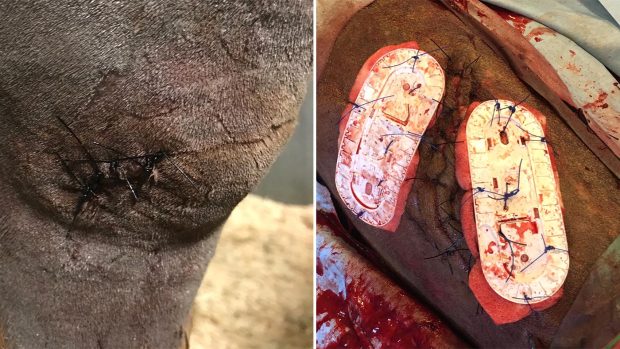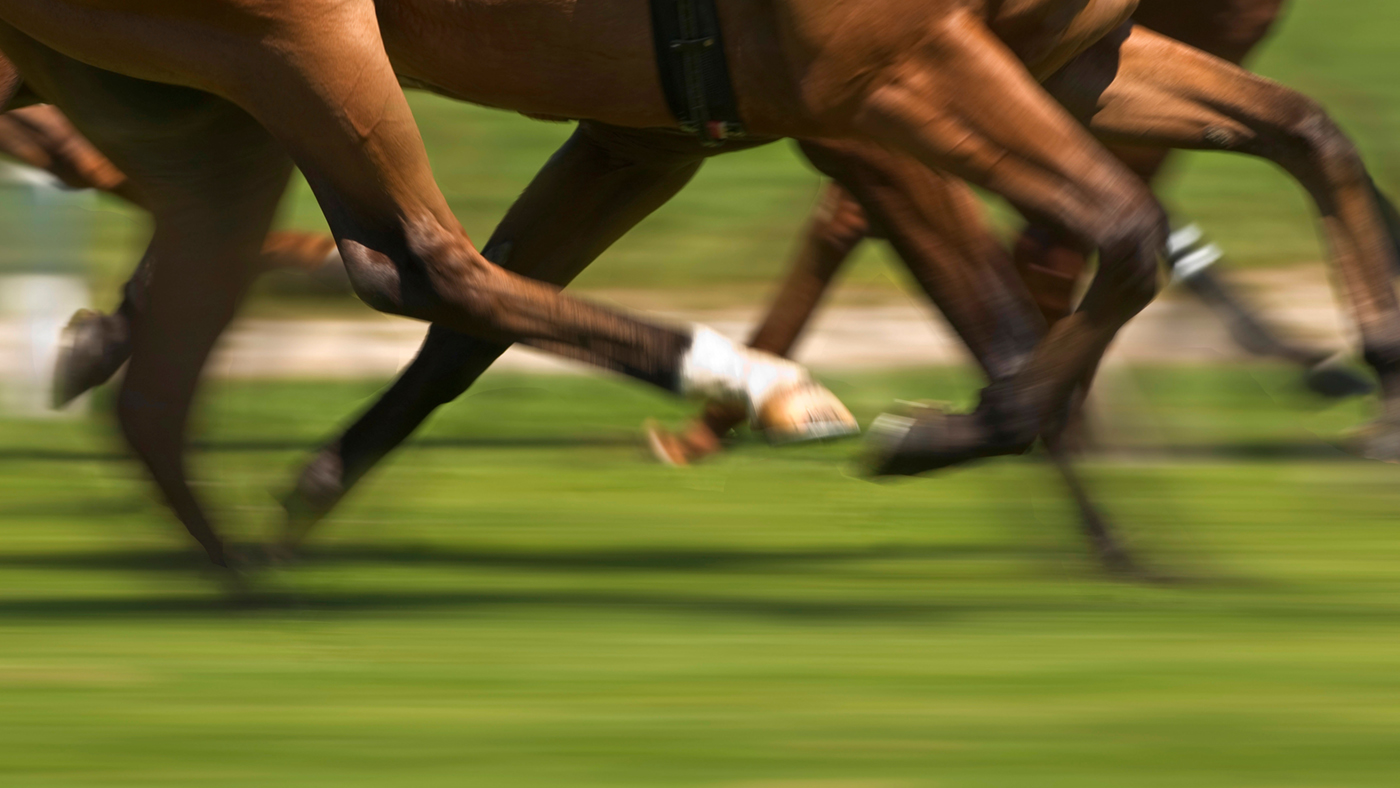Horses have a horrible tendency to wound themselves so they bleed profusely. But if you are faced with an horrific-looking injury, before panicking, remember: wounds heal from side to side, not end to end, so even if there is a nasty big hole, it can heal surprisingly well.
Before any wound can be dealt with, however, the bleeding must be stopped. It is exceedingly rare for a horse to bleed to death when a single artery or vein is cut, but severe bleeding must be controlled. However, a small amount of initial bleeding may be beneficial, as it can flush out any dirt.
Always contact your vet if:
- Any wound is bleeding profusely.
- The horse is very lame, even if the wound itself is small.
- The wound is more than 10cm long and has gone right through the skin into the tissue beneath.
- There may be a foreign body in the wound.
- A vital structure such as a joint may be involved in the injury.
- The horse has NOT been vaccinated against tetanus.
Be aware that a little bit of blood will go a long way. An average Thoroughbred-sized horse normally has more than 50 litres of blood inside its body and has to lose more than 10 litres before the situation becomes life-threatening. If it is your horse that is bleeding, however, even a litre can look like a huge amount.
Profuse bleeding comes from two sources. Arterial blood, coming directly from the heart, is bright red and spurts in rhythm with the heartbeat, which can look very alarming. Severing a major artery is critical, but this would involve a big blood vessel near the heart, not a small artery on the lower limb.
The loss of large amounts of venous blood can be of concern, too. This is on its way back to the heart, so is darker in colour and oozes continuously.
The volume of blood lost depends upon many factors, particularly the size of the injured vessel and the extent of the wound. A clean cut will bleed far more than a jagged tear: if the skin is torn, the blood vessels are stretched, so are less liable to bleed extensively.
Stopping the bleeding
Clotting is essential to stop bleeding and this is a natural process that you can assist by applying pressure. Before any wound can repair the bleeding must be stopped, so whatever the source, it is essential to keep both yourself and the injured horse calm, and then try to stop the bleeding by firmly applying pressure to the wound.
Ideally, you should make a pressure pad from a thick cloth, or use gamgee from your
first-aid kit, with a non-stick dressing underneath. In an emergency, however, use whatever is to hand, such as a T-shirt, large handkerchief or towel. Press the pad against the wound and hold it there as tightly as possible.
Most such wounds are on the lower limb, so usually a thick pressure bandage over the area will control bleeding. If the blood soaks through, simply put more padding over the top and apply more pressure. You must keep a pressure pad in place for at least five minutes. Do not be tempted to take it off to look underneath, as that may well restart the bleeding.
Talk to the horse reassuringly as you keep pressure on the wound, encouraging him to stand still, so you can keep the pressure pad in place. If he is excited, the heart pumps faster and blood will run faster too. If you keep him calm and still, the blood will clot more easily. An injured horse or pony will often stand more quietly in a familiar environment, so unless the wound is enormous or the distance particularly great, it is usually best to lead a horse back to the yard and deal with the injury there.
If you estimate that the wound is bleeding more than about a teacupful per minute, do not move the horse until you have got a firm and effective pressure pad in place. It can also help to give a horse or pony a small amount to eat to settle them. If possible, ask someone else to steady the horse’s head, talk calmly and maybe feed the odd titbit.
Once the dressing is in place, apply a bandage using several moderately tight turns. This will provide sufficient pressure to greatly reduce the blood supply to the lower leg. Do not apply a tourniquet – a pressure bandage is much more practical in a crisis. Such a tight dressing should be safe for up to two hours. Once you have got a firm, comfortable pressure bandage controlling the bleeding, it is best to leave it in place until your vet can treat the injury.
|





